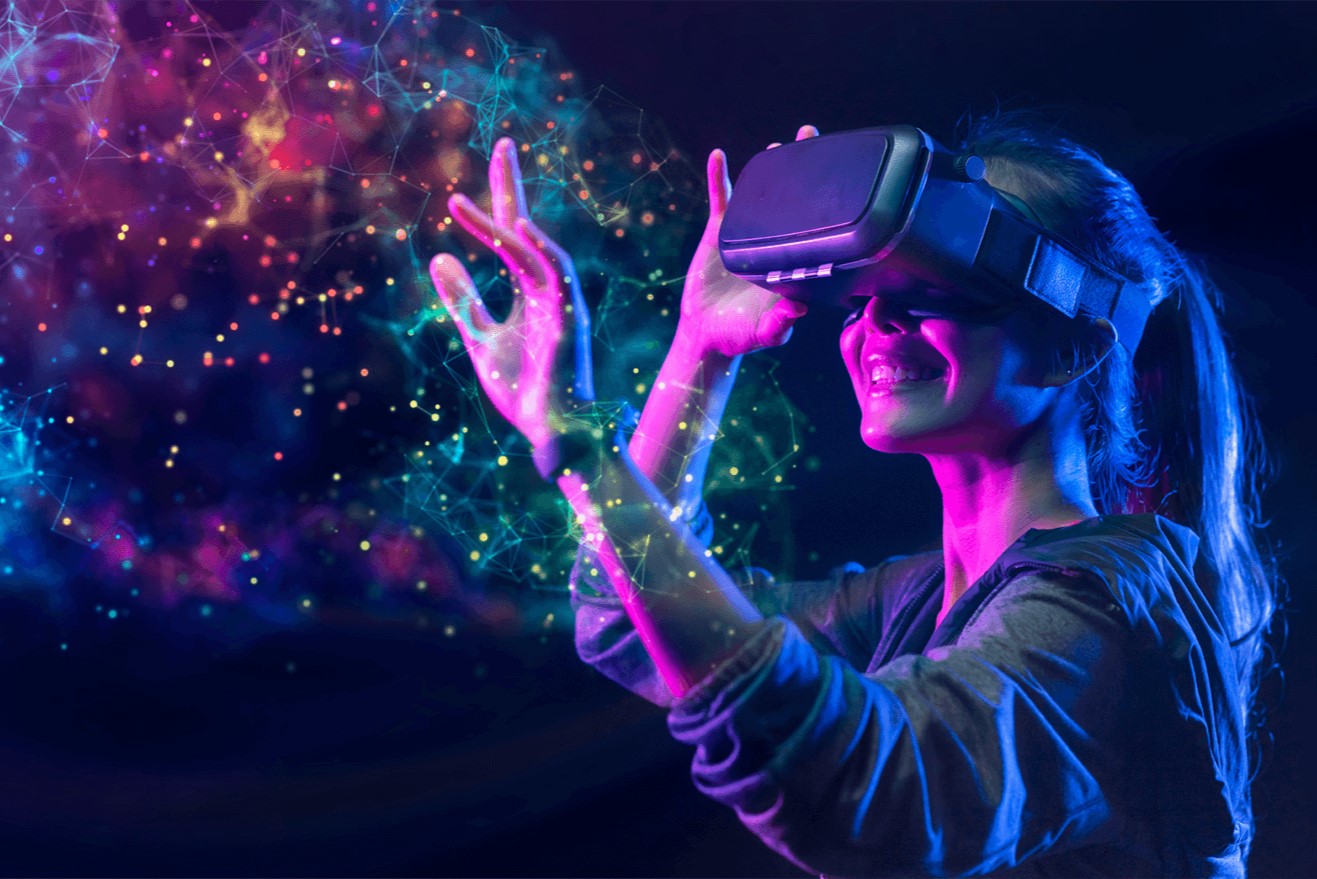
Virtual reality (VR) has emerged as a groundbreaking technology, captivating the imagination of tech enthusiasts and the general public alike. With its ability to transport users to immersive, interactive, and seemingly real environments, VR has revolutionized various industries, from gaming and entertainment to healthcare and education. This article delves into 19 fascinating facts about virtual reality, shedding light on its origins, advancements, and diverse applications. Whether you're a VR aficionado or a newcomer intrigued by this cutting-edge technology, these insights will provide a comprehensive understanding of the past, present, and future of virtual reality. So, fasten your seatbelt and get ready to embark on an exhilarating journey through the captivating realm of virtual reality.
Key Takeaways:
- Virtual Reality (VR) has diverse applications, from gaming to healthcare and education, offering immersive experiences and realistic simulations across various industries.
- VR technology continues to evolve rapidly, redefining entertainment, storytelling, and social interactions, with boundless possibilities for integration into everyday life.
Virtual Reality (VR) has been around for decades.
Virtual Reality, often abbreviated as VR, has been a concept since the mid-20th century. The idea of creating an artificial environment that simulates a physical presence has fascinated innovators and tech enthusiasts for years.
VR technology has diverse applications.
From entertainment and gaming to healthcare, education, and even military training, VR has found applications in various fields. Its immersive nature has made it a valuable tool for simulating real-world experiences and environments.
The term "virtual reality" was coined in the 1980s.
The phrase "virtual reality" was first coined in the 1980s, marking the beginning of a new era in technological advancements.
The first VR headset was created in the 1960s.
The first VR headset, known as the "Sword of Damocles," was developed by Ivan Sutherland and his student Bob Sproull at Harvard University in the 1960s. This groundbreaking invention laid the foundation for modern VR technology.
VR can offer a sense of presence and immersion.
One of the key features of VR is its ability to transport users into a simulated environment, providing a profound sense of presence and immersion.
The gaming industry has embraced VR.
The gaming industry has wholeheartedly embraced VR technology, offering gamers an immersive and interactive experience like never before.
VR has revolutionized the way we consume media.
With VR, users can immerse themselves in virtual worlds, revolutionizing the way they consume media, from movies and documentaries to interactive experiences.
VR has potential therapeutic applications.
In the field of healthcare, VR has shown promise as a therapeutic tool for treating phobias, PTSD, and chronic pain, among other conditions.
VR has made significant strides in education.
Educators have incorporated VR into classrooms, providing students with immersive learning experiences that complement traditional teaching methods.
VR has implications for architectural and urban design.
Architects and urban planners utilize VR to create immersive 3D models of buildings and cities, allowing for interactive and realistic simulations.
VR can simulate real-world scenarios for training purposes.
In fields such as aviation, military, and emergency response, VR is used to simulate real-world scenarios for training purposes, enhancing preparedness and decision-making skills.
VR technology continues to evolve rapidly.
Advancements in VR technology, including higher resolutions, improved motion tracking, and realistic haptic feedback, are driving the evolution of immersive experiences.
VR has the potential to transform social interactions.
With VR, individuals can interact in virtual spaces, potentially transforming the way people communicate and collaborate across geographical boundaries.
VR raises ethical and social considerations.
The immersive nature of VR raises ethical considerations regarding privacy, addiction, and the blurring of virtual and real-world experiences.
VR headsets come in various forms.
From standalone headsets to those requiring connection to a computer or gaming console, VR headsets are available in a variety of forms, catering to different user preferences and experiences.
VR experiences can induce motion sickness.
Some users may experience motion sickness or discomfort when using VR, a phenomenon known as simulator sickness, which is an area of ongoing research and development.
The cost of VR technology has become more accessible.
As technology advances and becomes more mainstream, the cost of VR equipment has become more accessible to consumers, making immersive experiences attainable for a wider audience.
VR has the potential to redefine entertainment and storytelling.
The immersive and interactive nature of VR has the potential to redefine entertainment and storytelling, offering new avenues for creative expression and audience engagement.
The future of VR is filled with possibilities.
As VR technology continues to advance, the future holds boundless possibilities for its integration into various aspects of everyday life, from entertainment and communication to education and beyond.
Virtual Reality (VR) has come a long way since its inception, evolving from a concept to a transformative technology with diverse applications across multiple industries. The term "virtual reality" was coined in the 1980s, marking the beginning of a new era in technological advancements. The first VR headset, known as the "Sword of Damocles," was developed in the 1960s, laying the foundation for modern VR technology. VR has found applications in various fields, including entertainment, gaming, healthcare, education, and military training, showcasing its diverse potential. With its immersive nature and ability to transport users into simulated environments, VR has revolutionized the way people consume media, offering an interactive and engaging experience. As VR technology continues to evolve rapidly, the future holds boundless possibilities for its integration into everyday life, redefining entertainment, storytelling, social interactions, and more.
Conclusion
In conclusion, virtual reality is a groundbreaking technology that has the potential to revolutionize various industries, from entertainment and gaming to healthcare and education. Its immersive and interactive nature offers a new dimension of experience, allowing users to engage with digital environments in unprecedented ways. As VR continues to evolve, it's poised to redefine how we interact with technology, offering endless possibilities for innovation and advancement.
FAQs
What are the different types of virtual reality?
There are primarily three types of virtual reality: non-immersive VR, semi-immersive VR, and fully immersive VR. Non-immersive VR involves viewing a computer-generated environment on a screen, while semi-immersive VR provides a partially immersive experience. Fully immersive VR, on the other hand, completely engulfs the user in a virtual environment, typically through the use of VR headsets.
How is virtual reality being used in healthcare?
Virtual reality is increasingly being utilized in healthcare for various purposes, including pain management, surgical training, therapy for mental health disorders, and exposure therapy for phobias. VR simulations are also used to create lifelike scenarios for medical training and education, allowing healthcare professionals to practice complex procedures in a safe and controlled environment.
Virtual reality's captivating world holds countless more secrets waiting to be explored. Immerse yourself in the thrilling realm of VR gaming, where extraordinary adventures await. Uncover the unbelievable story behind Palmer Luckey, a pioneering figure who shaped the VR landscape. Delve into the captivating process of VR development and witness the boundless potential of this transformative technology.
Was this page helpful?
Our commitment to delivering trustworthy and engaging content is at the heart of what we do. Each fact on our site is contributed by real users like you, bringing a wealth of diverse insights and information. To ensure the highest standards of accuracy and reliability, our dedicated editors meticulously review each submission. This process guarantees that the facts we share are not only fascinating but also credible. Trust in our commitment to quality and authenticity as you explore and learn with us.


